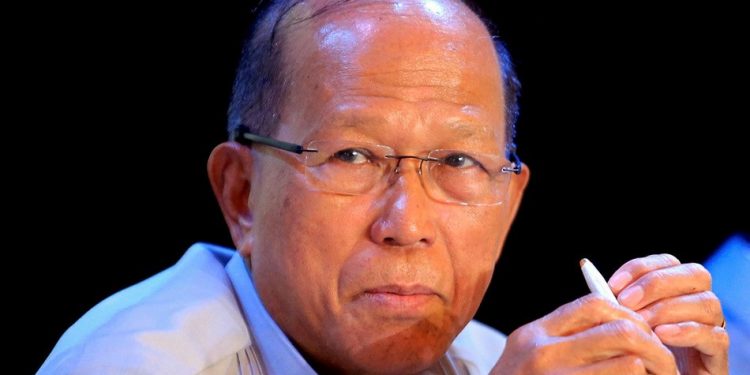PH-US Mutual Defense Treaty needs ‘revisions’- DND chief Lorenzana

Defense Secretary Delfin Lorenzana (File photo)
Defense Secretary Delfin Lorenzana recently said there was a need for a comprehensive review of Philippines’ Mutual Defense Treaty (MDT) with the United States to make it more current and relevant in the existing security situation and the growing pressure from China.
At the online event marking the 70th anniversary of the countries’ mutual defense treaty (MDT) organized by the Washington –based Center for Strategic and International Studies, Lorenzana said there was a need to “upgrade” and “update” the alliance and to make clear the “extent of American commitments.”
Lorenzana said this is “immensely relevant” amid rising tensions in the South China Sea, including a possible Chinese Air Defense Identification Zone (ADIZ) declaration, forcible expulsion of Filipino troops stationed over the Second Thomas Shoal (part of Philippine continental shelf), or reclamation and militarization of the Scarborough Shoal.
“As we ramp up our efforts to improve our facilities in the Spratly features within Philippine continental shelf and control, the issue of alliance commitments will become even more important,” Lorenzana added.
Signed on Aug. 30, 1951, the MDT is an accord that stipulates that the Philippines and the US would support each other if either of them were to be attacked by an external party.
Lorenzana added that revisions and additions in the MDT and other relevant Philippines-US defense agreements are essential to ensure maximum possible cooperation and interoperability to deal with so-called “gray zone” threats, namely state-sanctioned/supported maritime militia forces, that have been intimidating smaller claimant states and their fishermen in recent years.
“The US Ambassador to the Philippines Sung Kim has publicly suggested that the MDT could also apply to this type of hybrid warfare strategy deployed by the likes of China. But we need more specific operational discussions and, eventually, joint activities within the bounds of our existing defense commitments,” Lorenzana added.
As the Armed Forces of the Philippines (AFP) embarked on a multi-billion dollar modernization program aimed at addressing current and future security concerns in its vast maritime domain, the defense chief added that it is about time for the US to provide more assistance to the Philippines, which has been its long-time ally.
“In this light, we believe it’s important that we go beyond ‘Vietnam era’ hardware in bilateral grants and purchases and, accordingly, move towards acquisition of evermore advanced weapons systems that will allow us to have a ‘minimum deterrence’ capability against external threats and adversaries. Non-treaty allies countries have been receiving billion-dollar military aid and advanced weapons systems from the US. Perhaps, a long-time ally like the Philippines, facing major adversaries in Asia, deserves as much, if not more assistance and commitment,” Lorenzana said.
While the existing MDT has been helpful to the Philippines, Lorenzana said the agreement is not sufficient to enable the country to stand on its own feet, hence the need for an upgrade.
“In summary, the MDT has been beneficial to the Philippines, but not enough to make it stand on its own feet. We cannot be forever relying on others for our security. Helping the Philippines modernize its military would make it a more reliable and dependable ally to the United States in the pursuit of a free and peaceful Indo-Pacific,” Lorenzana said.
For Washington, having the ability to rotate in troops is important not only for defense of the Philippines, but strategically when it comes to countering China in the region.
In July, US Secretary of State Antony Blinken repeated a warning to China that an attack on Philippine armed forces in the South China Sea would trigger the mutual defense treaty.






